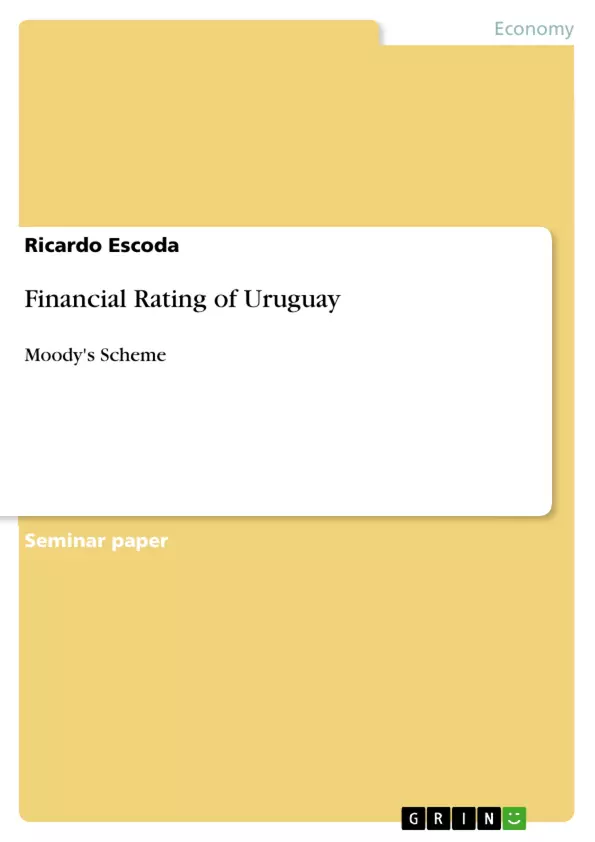Financial Planning and Rating are two enormous important topics in the world’s economic markets. Since many years global rating agencies like Standard & Poor’s, Moody’s, and Fitch are ranking countries and enterprises worldwide according to their individually estab- lished methodologies to deliver transparency. Financial Planning in the form of Business Planning is essential to establish or keep a company effective.
Inhaltsverzeichnis (Table of Contents)
- 1. Introduction
- 2. Part I: Rating
- 2.1 Brief description of Uruguay and its economy
- 2.2 Country rating according to Moody's rating methodology
- 2.2.1 FACTOR 1
- 2.2.2 FACTOR 2
- 2.2.3 FACTOR 3
- 2.2.4 FACTOR 4
- 2.2.5 Detailed guidance to obtain Moody's final country rating
- 2.3 Risks arising from doing business within Uruguay
- 3. Part II: Business Planning and Modelling
- 3.1 Define the problem
- 3.2 Gather information from the internet
- 3.3 Apply an exploratory analysis
- 3.4 Choose a model
- 3.5 Fit the model
- 3.6 Use and evaluate the model
- 4. Bibliography
Zielsetzung und Themenschwerpunkte (Objectives and Key Themes)
This case study aims to analyze Uruguay's economic situation and rating according to Moody's methodology. It then delves into business planning and modeling within the context of the Uruguayan economy, particularly focusing on the agricultural export sector.
- Country rating and risk assessment
- Economic analysis of Uruguay
- Application of Moody's rating methodology
- Business planning and modeling
- Risks and opportunities within the Uruguayan agricultural export sector
Zusammenfassung der Kapitel (Chapter Summaries)
- Chapter 1: Introduction: This chapter introduces the key topics of financial planning and rating, highlighting their importance in global economic markets.
- Chapter 2: Part I: Rating: This section focuses on Uruguay's economy and its rating according to Moody's methodology. It provides a brief overview of the country, its economic characteristics, and a detailed breakdown of Moody's rating process, including the various factors considered. The chapter also explores potential risks associated with doing business within Uruguay.
- Chapter 3: Part II: Business Planning and Modelling: This section delves into the practical aspects of business planning and modeling. It covers the process of defining a problem, gathering data, conducting exploratory analysis, choosing a model, fitting it to data, and evaluating the model's effectiveness. This section likely provides a step-by-step guide to developing a successful business model within the context of Uruguay's economic landscape.
Schlüsselwörter (Keywords)
This case study explores the key concepts of financial planning, country rating, risk assessment, Moody's rating methodology, business planning, and modeling. It specifically examines Uruguay's economy, agricultural exports, and the risks and opportunities associated with this sector. The study likely utilizes various economic indicators, data analysis techniques, and potential models to understand and project Uruguay's economic performance.
- Quote paper
- Ricardo Escoda (Author), 2018, Financial Rating of Uruguay, Munich, GRIN Verlag, https://www.grin.com/document/438274



